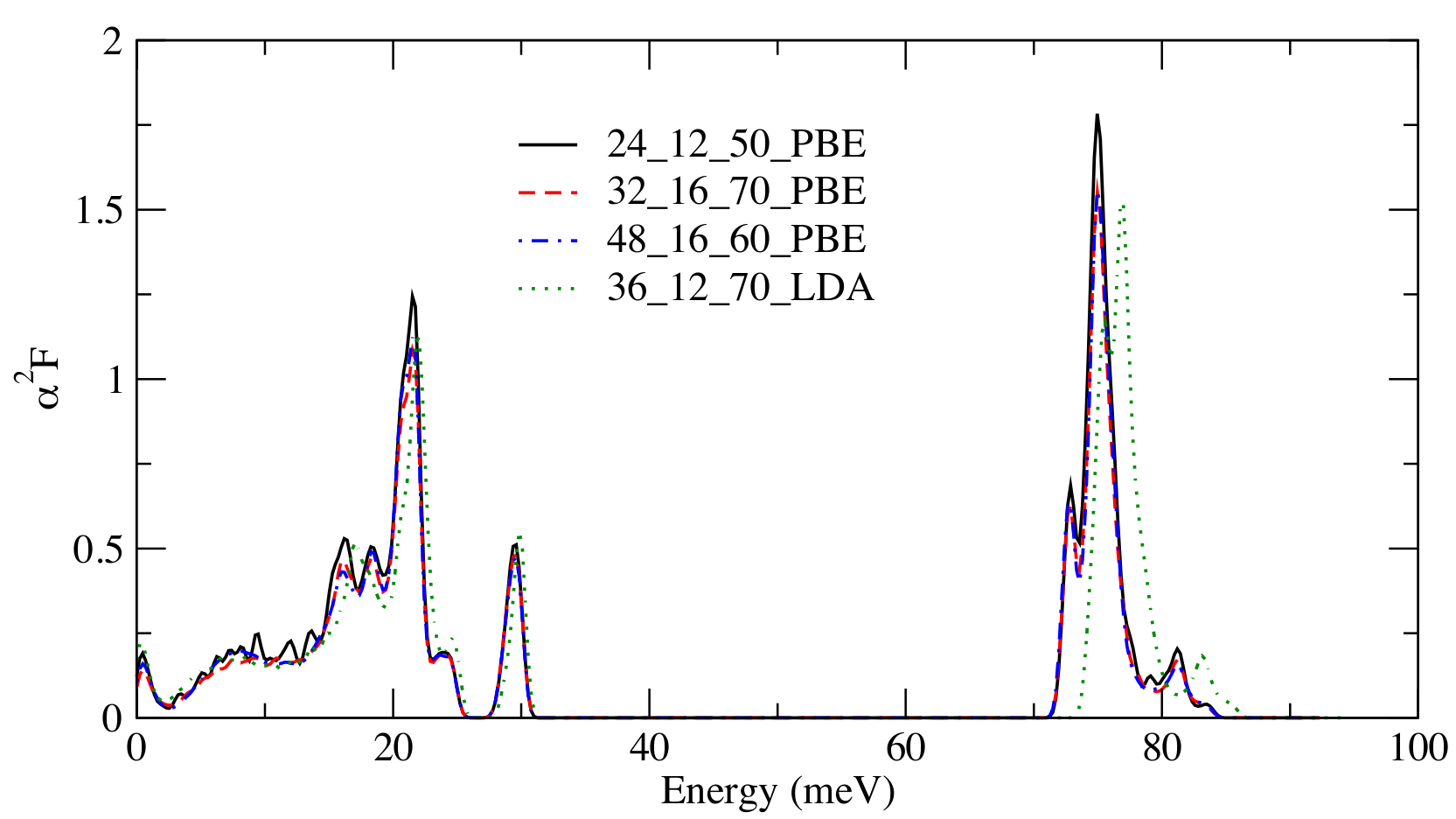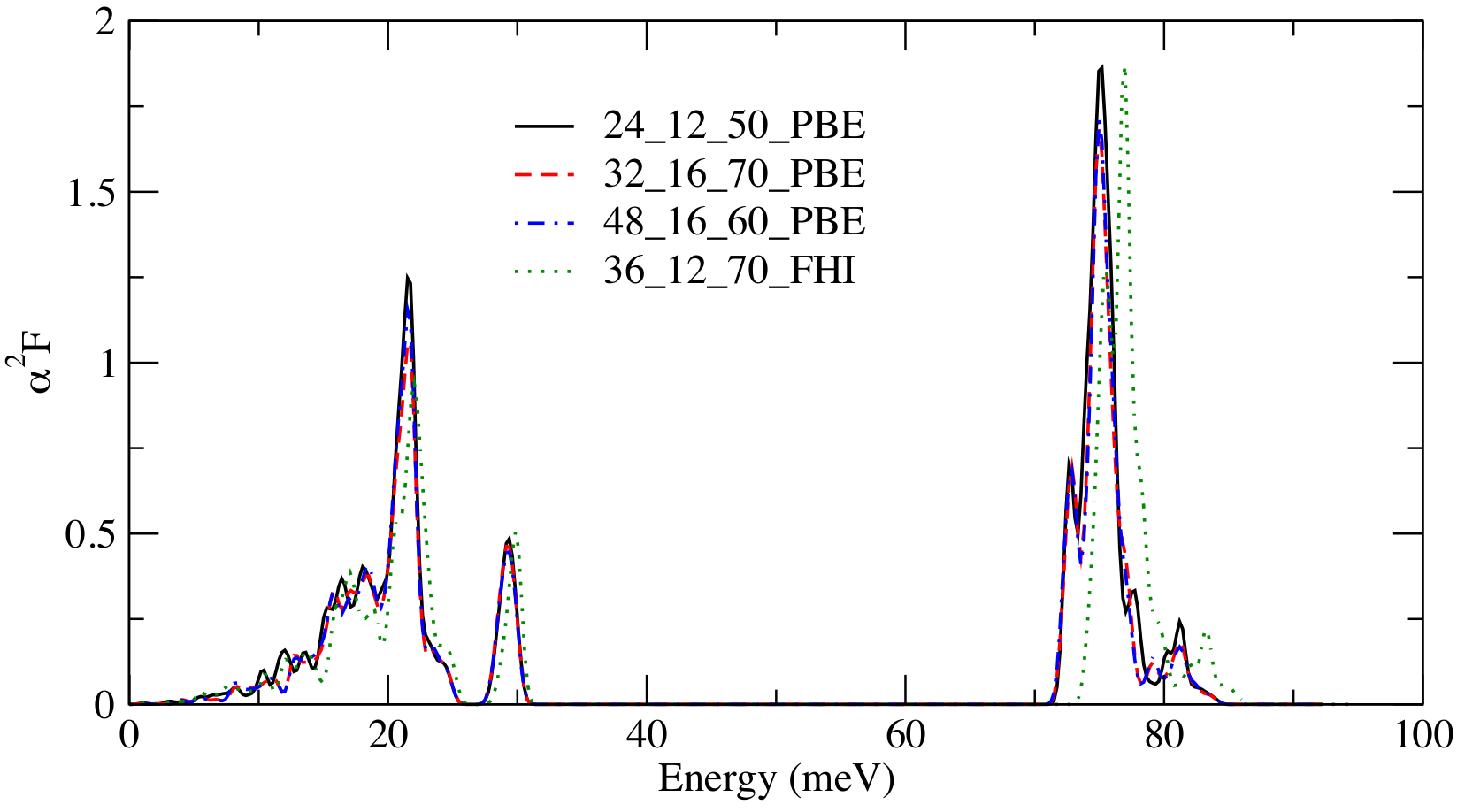Difference between Eliashberg functions
Posted: Thu Mar 29, 2018 11:36 am
Hi,
I am calculating the electron-phonon coupling (EPC) in certain 2D materials (MXenes). I have encountered a problem concerning divergences of the EPC at low energies, due to the Eliashberg function not going to zero for zero energy. After application of the acoustic sum rule (ASR), the phonon band structure is completely fine, without negative values. The phonon DOS, however, does not go exactly to zero, which seems to be the root cause of the problem. I would assume that the phonon DOS is calculated from the eigenvalues after correction with the ASR, so I also don't clearly understand why this is the case. Moreover, both gaussian and tetrahedron integration produce this issue.
The issue can be clearly seen in the following Eliashberg function, extracted from the A2F file:
However, the Eliashberg function from the A2F_QGRID file is very different at low energies and doesn't show this problem:
This Eliashberg function is perfectly suited to extract the isotropic EPC. However, I would like to understand better how one arrives at these very different results.
Hence my question: Does anyone know the difference in calculation between those two versions of the Eliashberg function outputted by anaddb? I haven't been able to find documentation on the topic. As you can see in the figures, the issue is robust against variations in the k-point grid, q-point grid, the ecut and the functional (listed in this order in the quadruplets given as insets in the graphs above).
Best wishes,
Jonas
I am calculating the electron-phonon coupling (EPC) in certain 2D materials (MXenes). I have encountered a problem concerning divergences of the EPC at low energies, due to the Eliashberg function not going to zero for zero energy. After application of the acoustic sum rule (ASR), the phonon band structure is completely fine, without negative values. The phonon DOS, however, does not go exactly to zero, which seems to be the root cause of the problem. I would assume that the phonon DOS is calculated from the eigenvalues after correction with the ASR, so I also don't clearly understand why this is the case. Moreover, both gaussian and tetrahedron integration produce this issue.
The issue can be clearly seen in the following Eliashberg function, extracted from the A2F file:
However, the Eliashberg function from the A2F_QGRID file is very different at low energies and doesn't show this problem:
This Eliashberg function is perfectly suited to extract the isotropic EPC. However, I would like to understand better how one arrives at these very different results.
Hence my question: Does anyone know the difference in calculation between those two versions of the Eliashberg function outputted by anaddb? I haven't been able to find documentation on the topic. As you can see in the figures, the issue is robust against variations in the k-point grid, q-point grid, the ecut and the functional (listed in this order in the quadruplets given as insets in the graphs above).
Best wishes,
Jonas

